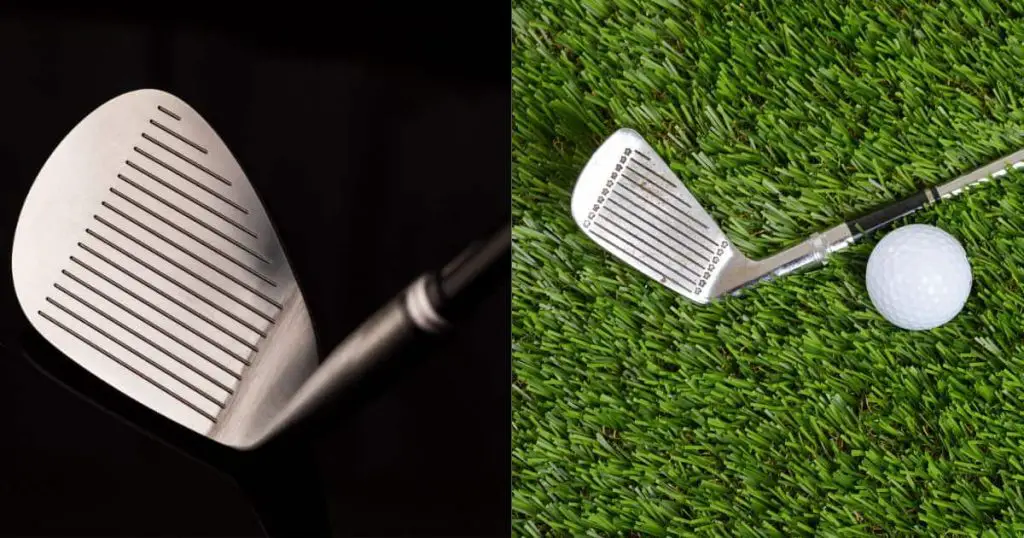Having the right golf equipment in your golf bag could spell the difference between success and failure in your game – and no one wants failure, even amateur golfers!
Many average golfers have issues regarding how many wedges to bring and which ones are most suited to our game – lob wedges, sand wedges, or something else. In the golfing industry, there are many misunderstandings about lob wedges and sand wedges. Fortunately, we know a great deal about them!
Continue reading to learn everything you need to know about sand wedges vs. lob wedges.
What Distinguishes a Sand Wedge From a Lob Wedge?
To begin with, a lob wedge offers much greater loft than a sand wedge. A sand wedge frequently has a loft of up to 58 degrees, whereas a lob wedge typically has more than 58 degrees of loft.
Additionally, lob wedges have a propensity for having a wider open clubface and the capacity for bigger quantities of bounce. Although it may be used anywhere on the field, short, lofted shots close to the green are where it is most frequently used.
In addition to helping get out of sand traps, sand wedges are also effective for full-swing strategies to the green.
Some players prefer to carry only one type in their bag, but most will carry both. When both are in the bag, golfers are more likely to have the appropriate equipment for each kind of golf shot.
However, let’s examine both their positive and negative sides in more detail.
Sand Wedges

Sand wedges are commonly used by many professional golfers.
Sand wedges are a great choice for exiting the sand strap since they have a mix of lift, bounce, and rotation. Utilizing the bounce of the club, you may use this wedge to push your golf ball into the hole and the bunker.
The spin this wedge could produce will also make it easy for you to stop the ball close to the pin.
Some players believe that this type of wedge should only be employed to get out of sand pits, however, this is not the reality – they can be utilized for full shots into the green as well aschipping and pitching.
However, this will not answer all of the questions that golfers have about sand wedges! Here are some additional details about them:
Loft Degree
The loft of a sand wedge must be around 56 degrees. Although clubs with a lower degree might also be helpful, most people consider this degree to be the minimum for a sand wedge.
However, given that many golf club manufacturers are lowering lofts, it’s important to make sure your sand wedge matches the other ones you have. On the golf field, some strokes will be more difficult if the loft has large gaps.
The sand wedge’s popularity is also a result of its great loft, which makes it a superb tool for getting out of the majority of traps. Some pot bunkers and traps will demand a little more work, but for the majority of simple bunkers, the 56-degree wedge will be fine.
Bounce
It’s a smart option to have a medium bounce wedge – typically around 12 degrees of bounce.
However, it won’t make taking a full swing from the fairway any simpler. In reality, it will just provide you the bare minimum to get out of bunkers when necessary.
Golfers need bounce on their wedges because it helps them get through the field, make good contact with the ball, and produce spin.
Hit Distance
The average player may hit this type of wedge between 80 and 100 yards.
Players who employ a sand wedge that complements their iron set will get more yardage than those who don’t.
However, as performance on the greens is much more crucial, players shouldn’t worry about wedges and yardage.
Lob Wedges

A lob wedge will be the club with the greatest loft in your bag. Although the prior kind of wedge is frequently used to escape a bunker, this kind of wedge can also be a helpful device.
It’s perfect for rapid up-and-down shots around the fairway that call for short strokes. Additionally, compared to every other club in your bag, a typical lob wedge will probably spin more.
Although some players avoid carrying this type of wedge, it is a very effective and valuable tool for players of all handicaps.
Some people think it’s difficult to hit a lob wedge, but as long as your approach is good, you shouldn’t have any trouble figuring it out.
Here is some further information about lob wedges:
Hit Distance
The same rule regarding distance applies to this kind of wedge as it does to the other – it shouldn’t be a huge worry. However, depending on how fast you swing, you might hit a lob wedge further or shorter.
One thing is for certain, though – cavity-back style wedges will likely travel farther than blade-type lob wedges.
Bounce
Most players prefer their lob wedges to have a higher bounce. When the club strikes from softer lies, such as those with thick roughness, it will help it cut through the ground.
You won’t need a great deal of bounce in your wedge unless you’re playing from a shorter, more hardpan lie.
Those shots are particularly fit for a bump-and-run pitching wedge stroke rather than this kind of wedge.
Good for High Handicappers
The easiest way for a player with a high handicap to have a low handicap is to improve their short game . A golfer’s chances of scoring are increased the more tools they have at their disposal to improve their short game.
High handicap golfers who are serious about their game should carry this kind of wedge and start learning how to score with it.
Most strokes in golf are lost within 100 yards.
Having several wedges in your pack to hit shots from various lays and angles is a great way to start getting better.
Sand Wedge vs Lob Wedge – Which One to Choose?
When you decide that your wedge needs to be replaced or new wedges are needed for your golf bag, there are a few things you should do. You must first assess your current gear, calculate the necessary lofts, choose the type of wedge, and determine the bounce.
However, let’s examine this in greater detail.
Check Your Equipment
Before purchasing new wedges, it is vital to evaluate your current setup. In particular, it is vital to understand the loft of your wedge.
You can build the remaining wedges by being aware of this loft.
Determine the Lofts
The loft or the angle at which the clubface is positioned with the shaft determines how far the ball will travel. Players can choose a distinct launching angle and direction into the holes with each wedge thanks to the lofts, which can vary from 44 to 64 degrees.
Even though wedges are categorized using these labels, understanding wedge lofts and their various applications is crucial to improving your game.
If you don’t consider your current setup when getting a replacement or new wedge, you can find yourself with a lot of space between your clubs.
Wedge Type
You can choose between two different fundamental types of wedges that go well with your iron set. Wedges that complement the set are a terrific option for those that take consistency throughout their set extremely seriously.
Think about the high‐performing blade-style golf wedges if you want the best performance and spin. Although they won’t be as effective in terms of distance, blade-style wedges will aid in performance and spin.
Bounce
You might be able to select thebounce you desire for your golf wedges by investing some time and conducting some study.
You may want to take these things into account when choosing bounce depending on your swing style and the courses you play.
One of our best suggestions is to select a couple of different bounce levels.
To ensure that you can make all different kinds of shots, it will be helpful to have wedges with different bounce levels in your bag.
Final Thoughts
Sand wedge or lob wedge? While sand wedges and lob wedges differ greatly, neither one is necessarily superior to the other. Players will benefit from using both of them to score and perform effectively.
Make sure the wedges that you possess have the appropriate loft. Also, remember that golf equipment producers produce both blade-style and cavity-back clubs. Decide on the cavity-back approach if you are a golfer who needs greater forgiveness.
It all depends on your preferences and style, so we hope you choose wisely! Whatever you choose, just be sure that neither of them is better than the other and that having both of them is the genuine deal!
For more useful information about golf, visit golf-tipsandfacts.com.







